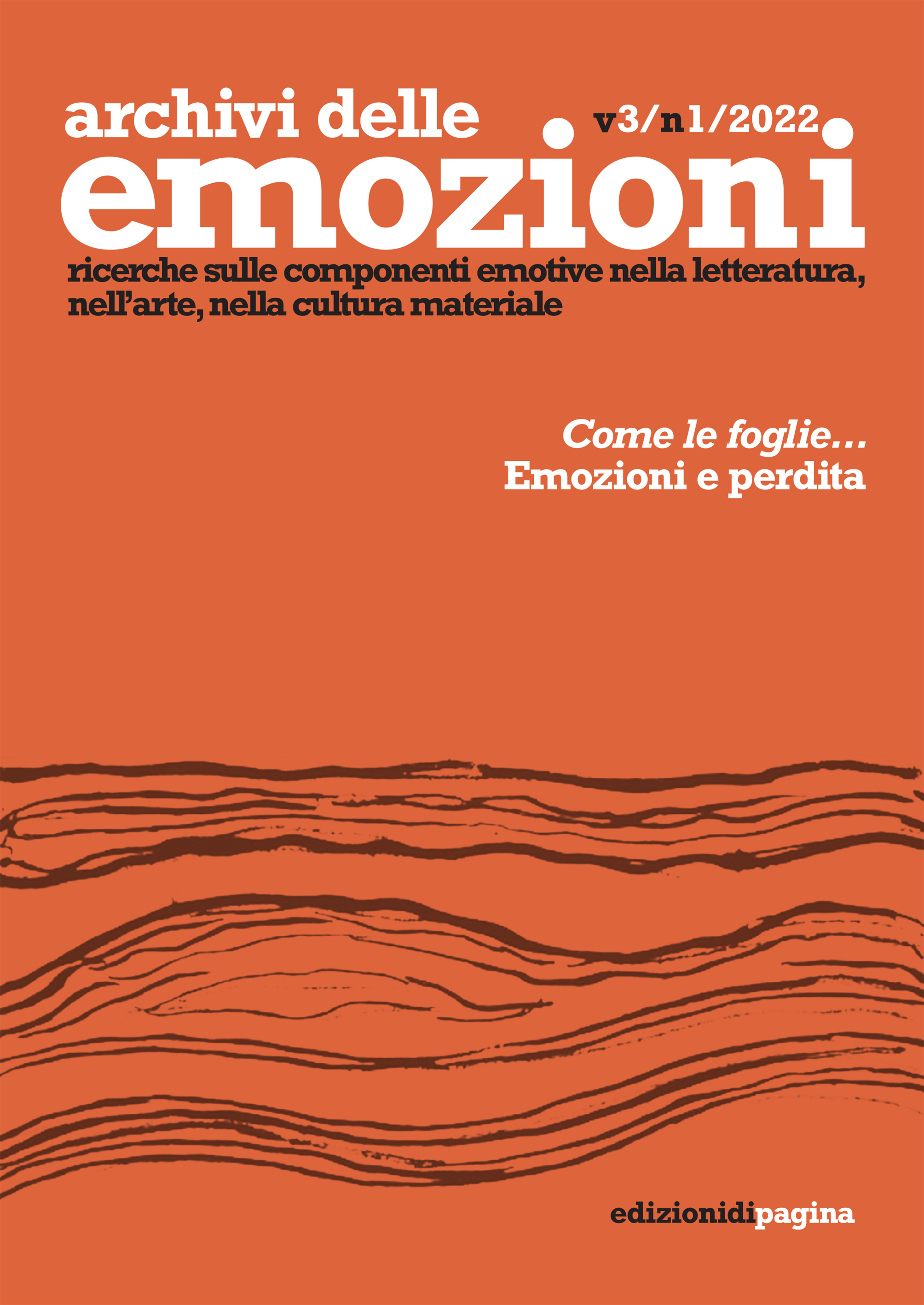Abstract
The natural landscape was the engine of daily life in prehistorical times, and, for that, it was the main source for linguistic creativity by supplying a material reality that inspired symbolic constructions and moulded a communication based on a common background. This paper considers a semiotics’ approach on language and on the creation of signs of meaning based on empirical experience, to understand and describe the expression of emotion in Sumerian literature. The main argument stands for the use of universal signs of meaning for expressing feelings in a way that would be understood independently of the linguistic background. Considering an example of a text of ambiguous interpretation as well as texts with clear hermeneutic ground for a dialogic exercise, a transversal understanding of abstract images was possible since symbolic constructions were generated from interaction with nature, which tend to be a similar empirical experience in all ancient human communities sustained by agricultural production. Examples taken from literary sources regarding symbolic constructions and processes of signs of meaning acquisition are presented, described, and commented in this study.
Riferimenti bibliografici
ALEXANDROVA, A., 2017, A philosophy for the science of well-being, New York.
ALI, F.A., 1964, Sumerian Letters: Two Collections from the Old Babylonian Schools (phdthesis), University of Pennsylvania.
ALSTER, B., 1972, Dumuzi’s dream. Aspects of oral poetry in a Sumerian myth, Mesopotamia, Copenhagen.
ATTINGER, P. 2021, Glossaire sumérien–français: Principalement des textes littéraires paléobabyloniens, Harrassowitz Verlag.
CIVIL, M., 1997, The instructions of Ur-Ninurta: A New Fragment, «AuOr» XV, pp. 43–53.
CIVIL, M., 1983, Enlil and Ninlil: The Marriage of Sud, «Journal of the American Oriental Society CIII», pp. 43–66.
COBLEY, P., 2001, Routledge companion to semiotics and linguistics, London.
COHEN, M.E., 1988, The Canonical Lamentations of Ancient Mesopotamia, Maryland.
COUTO-FERREIRA, M. E. 2017, ‘Let me be your canal’: Some thoughts on agricultural landscape and female bodies in Sumero-Akkadian sources. In L. Feliu, F. Karahashi, & G. Rubio (Eds.), The First Ninety Years, De Gruyter, pp. 54–69.
COUTO-FERREIRA, M. E. 2010, It is the same for a man and a woman: Melancholy and lovesickness in ancient Mesopotamia. In A. Grossato (Ed.), Umana, divina malinconia, Edizioni dell’Orso, pp. 21–40.
EDZARD, D. O. 2000, U 7804 // UET VI/1 26: "Gedicht von der Hacke. In W. G. Lambert, A. R. George, & I. L. Finkel (Eds.), Wisdom, Gods and literature: Studies in Assyriology in honour of W.G. Lambert, Eisenbrauns, pp. 131–135.
EDZARD, D.O., 1997, Gudea and his dynasty, The Royal inscriptions of Mesopotamia, Toronto.
Eco, U. 2002, Trattato di semiotica generale (18. ed), Milano.
FERRARA, A. J. 1995, Topoi and Stock-Strophes in Sumerian Literary Tradition: Some Observations, Part I, «JNES», LIV54 2, pp. 81–117.
FLEMING, D. E. 2003, Ur: After the Gods Abandoned Us, «The Classical World», XCVII 1, pp. 5–18.
FERREIRA, N.H.S., 2019, The silent voices of the past and the abstract thought on the agricultural landscape: a dialogic reading of Sumerian and Latin literatures, Universidade de Coimbra / Universitat de Barcelona.
GARCIA-VENTURA, A. 2021, Shaping Gender, Shaping Emotions: On the Mutual Construction of Gender Identities and Emotional Roles in Ancient Mesopotamia. In S.-W. Hsu & J. Llop-Raduà (Eds.), The expression of emotions in ancient Egypt and Mesopotamia, Brill, pp. 220–237
GEORGE, A. R. (2003). The Babylonian Gilgamesh epic: Introduction, critical edition, and cuneiform texts. Oxford University Press.
GREEN, M.W., 1978, The Eridu Lament, «Journal of Cuneiform Studies» XXX, pp. 127-167.
HSU, S.-W., & LLOP-RADUÀ, J. 2021, The Expression of Emotions in Ancient Egypt and Mesopotamia: An Introduction, in S.-W. Hsu & J. Llop-Raduà (Eds.), The expression of emotions in ancient Egypt and Mesopotamia, Brill, pp. 1–22.
JAQUES, M. 2021, Emotions and Their Expression in a Religious Historical Perspective in Ancient Mesopotamia, in S.-W. Hsu & J. Llop-Raduà (Eds.), The expression of emotions in ancient Egypt and Mesopotamia, Brill, pp. 231–254.
JAQUES, M. 2017, The Discourse on Emotion in Ancient Mesopotamia: A Theoretical Approach, in S. Kipfer (Ed.), Visualizing emotions in the Ancient Near East, Vandenhoeck & Ruprecht, pp. 185–206.
KIPFER, S. 2017, Visualizing Emotions in the Ancient Near East. An Introduction, in S. Kipfer (Ed.), Visualizing emotions in the Ancient Near East, Vandenhoeck, pp. 1–23.
LOISEL, A.-C. R., 2021, From Landscape to Ritual Performances:Emotions in Sumerian Literature. In S.-W. Hsu & J. Llop-Raduà (Eds.), The expression of emotions in ancient Egypt and Mesopotamia, Brill, pp. 283–305.
LORUSSO, A.M., 2015, Cultural Semiotics, New York
MICHALOWSKI, P. (Ed.), 1989, The lamentation over the destruction of Sumer and Ur, Eisenbrauns.
PREUCEL, R.W., 2006, Archaeological semiotics, Social archaeology, Malden, Mass.
SEFATI, Y., 1998, Love songs in Sumerian literature: critical edition of the Dumuzi₋Inanna songs, Ramat Gan.
TINNEY, S. 1999, Ur-Namma the Canal-Digger: Context, Continuity and Change in Sumerian Literature «Journal of Cuneiform Studies» 51, pp. 1-31.
TINNEY, S. (2018). “Dumuzi’s Dream” Revisited, «Journal of Near Eastern Studies», 77(1), pp.85-89.

Questo lavoro è fornito con la licenza Creative Commons Attribuzione - Non commerciale 4.0 Internazionale.
Copyright (c) 2023 Archivi delle emozioni


